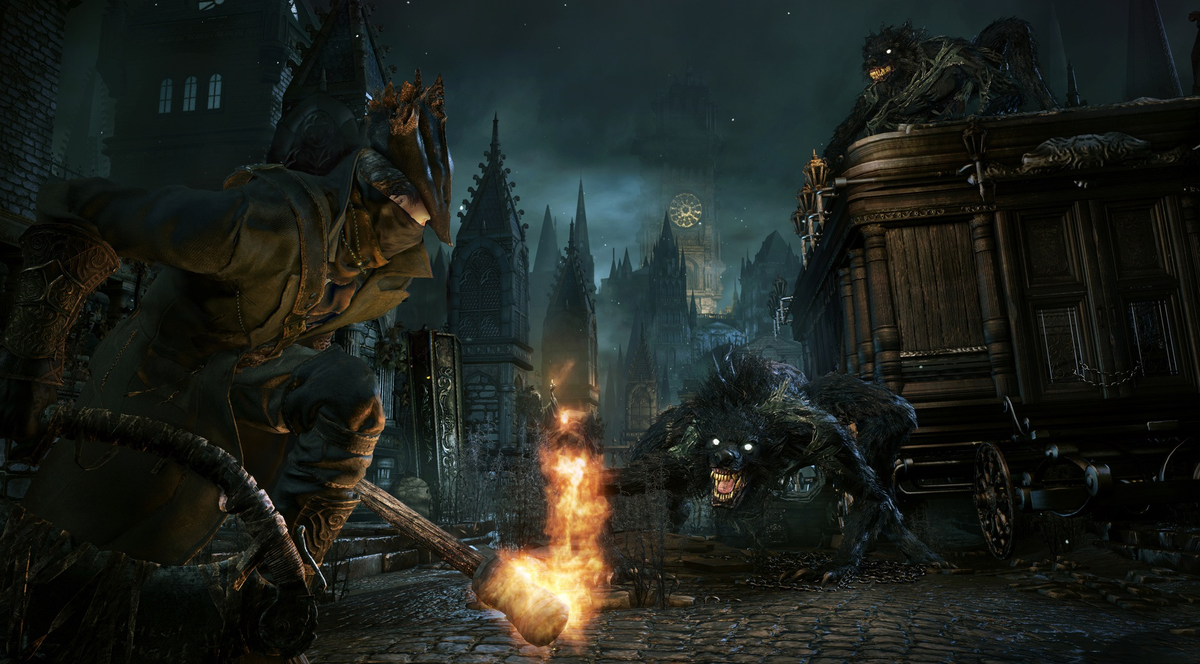Elden Ring is awesome but it's missing something that made Bloodborne better
Elden Ring lacks Bloodborne's sharp focus

Elden Ring is currently enjoying one of those ‘moments’ in gaming. Every few years, a game comes out that takes over social media and friend circles, and it quickly becomes clear that it’s a title that'll be talked about for many years to come. With the chatter around Elden Ring showing no signs of abating a month after its release, it feels like it’s already being mentioned in ‘greatest of all time’ conversations.
The hype is well deserved. In her review for TRG, Sam Greer gave Elden Ring full marks, and it’s hard to argue with the impressively broad scope and interconnected world of the title. It’s absolutely an experience begging to be played, even for those who haven’t quite gelled with Soulsborne games in the past.
That said, there’s something in the formula that feels different than previous FromSoftware titles. An aspect has been lost in the translation to a wider scope, leaving a sense that there’s something lacking in the world of Elden Ring - the previous focus of the developer's games.
Bloodborne's brutality
For me, the 2015 action role-playing classic Bloodborne remains the pinnacle of FromSoftware’s output. While its build and play options are not as narrow as 2019’s Sekiro: Shadows Die Twice, which perhaps took these aspects a little too far, Bloodborne asks the same thing from every player: be aggressive. While you’re presented with a wide array of weapons, you’re encouraged to get into the fight, coming within striking distance of enemies or bosses.
Nowhere is that philosophy more felt than in the game’s health system. Like in other games in the genre, you have a limited amount of healing resources; however, Bloodborne has an interesting ‘earn back’ system, which allows you to regain lost health if you start doing damage immediately. This makes it so that putting yourself in danger is often the safer play, rather than taking a ranged hit from which you can’t recover health. It’s a ferocious design that rewards those brave enough to get up close and personal in the fight.
Elden Ring, on the other hand, is filled to the brim with fighting styles and weapon options, from spell slingers, to bows and arrows, to massive two-handed weapons, to dual-wielding whips – it offers you the ability to play in whatever way you want, no matter how ridiculous. It’s an awesome feature, and one that makes it a much more approachable title; however, it also means you lose that feeling of united vision that’s so apparent in Bloodborne, which makes that game is a much tighter experience. Every player must overcome the same obstacles in a limited number of ways. It’s a very narrowly framed experience that feels like a demanding obstacle course, as opposed to Elden Ring’s open sandbox.
Gothic delights

This dynamic plays out in other areas of Bloodborne’s design too. Elden Ring’s world is vast, but it’s also broad. It has snowy mountaintops, a grand capital city, calm lakes, dark dungeons, fetid lakes, dream-like gardens and so much more. Think of any biome that fits a fantasy world, there’s probably a corresponding location somewhere in Elden Ring.
Bloodborne, by contrast, has a sense of largely taking place in one location. It’s sprawling and has variety, but it feels confined to the city of Yharnam and its connected areas. This more micro perspective helps with the overall execution, creating the feeling of an intimate vision, which makes it feel like a lived-in environment.
Its art direction benefits for the above reasons too, with FromSoftware taking a ‘Victorian Gothic’ theme to its furthest extremes. Vampires, poison beasts, ladies who turn into big dogs, werewolves, torch-wielding townspeople… it all just feels wonderfully tangible and, importantly, cohesive.
Violent ends
Now, don’t get me wrong. The reasons why Elden Ring lacks that focus also plays into some of its biggest strengths. The ability to explore this world for hours on end and get lost, which in turn can lead to new surprises, is to its credit. And the huge variety of weapons, spells, and tools with which to take on massive bosses is liberating, as every player can find something that works for them. It’s much easier for newer players to pick up than previous FromSoftware games and eliminates a barrier to entry for many who have struggled with the developer's games in the past.
All that said, its hulking vision means it can sometimes feel like it’s spilling over its sides. Bloodborne is a rumination on life and death in a vicious city, and asks the player to match that viciousness. It’s a deeply cohesive game that feels like all of its parts are focused on one goal – the execution of brutality. Elden Ring is an amazing achievement in its own right – and, in a lot of ways, more impressive, and especially more approachable. Still, I find myself yearning for that strict, laser-focused task that Bloodborne demands.
Get daily insight, inspiration and deals in your inbox
Sign up for breaking news, reviews, opinion, top tech deals, and more.

Patrick Dane is TechRadar Gaming's Guides Editor. With nearly a decade in the games press, he's been a consistent voice in the industry. He's written for a plethora of major publications and travelled the world doing it. He also has a deep passion for games as a service and their potential to tell evolving stories. To wit, he has over 2000 hours in Destiny 2, over 1000 in Overwatch and is now deeply into Valorant.
Most Popular





